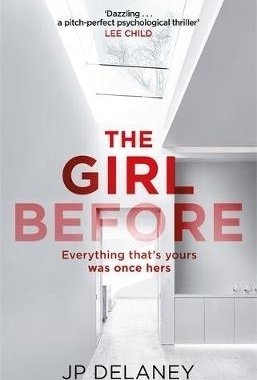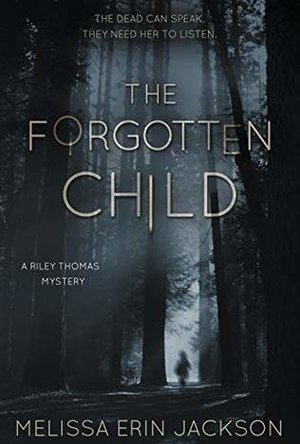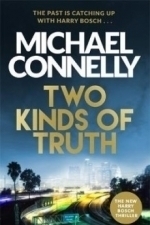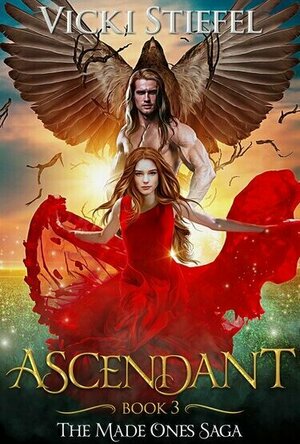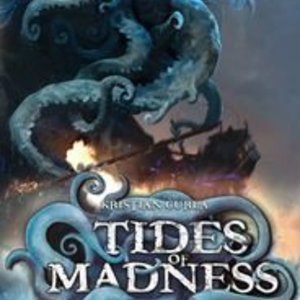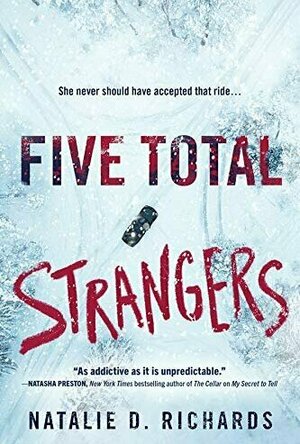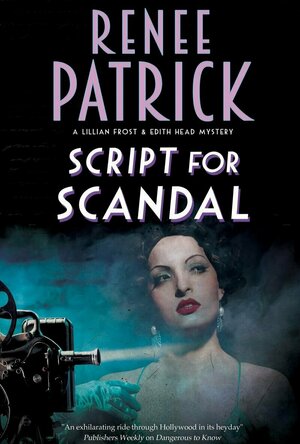Search
Search results
BookInspector (124 KP) rated The Girl Before in Books
Sep 24, 2020
I would like to begin by saying one simple word, WOW. This book left me absolutely speechless to be honest. This book is a masterpiece and I’m absolutely in love with this author. This book begins quite calm, by looking for some properties in London and introducing the characters: then - Simon and Emma and now - Jane. It tells two stories at the same time, the action which happened three years ago and the action which is happening currently. I really enjoyed that there is not story from one person’s perspective but two characters are telling their story at the same time. All the main characters are really disturbed in this book and have their own problems which influenced their personalities. There is this taste of “fifty shades of Gray” in this book; just it doesn’t flatter the book unfortunately. I really liked the way characters where untangled while you flip the pages, the way their personalities unfolded. They were not boring, one thing what I would’ve liked, is more insight into Simon's and Edward's personalities and how do they think, I would’ve liked their perspective in the book. Even though the men in this book seemed like strong and demanding ones, in the end of the day I think the women were the strong ones and the most determined ones in this book.
I found the plot original and I loved all the twists and turns which were going on in the book. Every chapter had something happening and it didn’t leave me bored. The more you go into the book, the more plot thickens, the more twists happen and it really kept me hooked. I think it was really great, that the book talked about really important topics, and the psychological aspects of eating disorders, how parents feel after still birth, parents thought about disabled children or how minimalist sees world. I’m new to minimalism and just briefly checked on it, but after reading this book I’m confused if I really want to know more… I loved that the name “the girl before” had deeper meaning than only finding out Emma’s story, it felt way deeper than it looked. The book itself is easy to read and the writing style was not difficult. The chapters are quite short so it doesn’t drag along. I really loved the ending of the book, which concluded the book really nicely but at the same time left me questioning. So to conclude, even though a lot of reviewers bashed this book, I loved this twisted, fast paced and full of suspense and psychological labyrinths creation and I recommend to try it and decide for yourself.
I found the plot original and I loved all the twists and turns which were going on in the book. Every chapter had something happening and it didn’t leave me bored. The more you go into the book, the more plot thickens, the more twists happen and it really kept me hooked. I think it was really great, that the book talked about really important topics, and the psychological aspects of eating disorders, how parents feel after still birth, parents thought about disabled children or how minimalist sees world. I’m new to minimalism and just briefly checked on it, but after reading this book I’m confused if I really want to know more… I loved that the name “the girl before” had deeper meaning than only finding out Emma’s story, it felt way deeper than it looked. The book itself is easy to read and the writing style was not difficult. The chapters are quite short so it doesn’t drag along. I really loved the ending of the book, which concluded the book really nicely but at the same time left me questioning. So to conclude, even though a lot of reviewers bashed this book, I loved this twisted, fast paced and full of suspense and psychological labyrinths creation and I recommend to try it and decide for yourself.
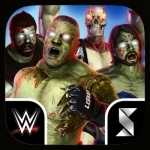
WWE Champions - Action RPG
Games and Entertainment
App
Your WWE dream rivalries are happening live in WWE: Champions, the free action RPG that pits the...

Pocket Scanner – PDF Scanner
Business and Productivity
App
Pocket Scanner Cloud turns your iPhone or iPad into a portable document scanner for efficient...
Heather Cranmer (2721 KP) rated The Forgotten Child (A Riley Thomas Mystery #1) in Books
Oct 3, 2018
Well Written Characters (1 more)
Spooky Scenes
Pointless Sex Scenes (1 more)
Cheesy Dialogue at Times
A Spooky Read
The synopsis for The Forgotten Child by Melissa Erin Jackson really drew me in. It was one of those books that I knew I had to read. I even pre-ordered the book. Luckily, I won it on a Goodreads giveaway, so I had the chance to read it before it was released.
I found the pacing to be fairly consistent for The Forgotten Child. For the most part, it was a fast paced read which I thoroughly enjoyed! There were a few times that the pacing slowed down a bit, and I was wishing for it to speed up again. However, those moments weren't very often.
The plot for The Forgotten Child has been done before, but Ms. Jackson made the story line interesting enough for me to enjoy the story. Riley, the main character, gets roped in to going to a house that has been featured on a popular ghost hunting show and known to be very haunted. It was also the site of some very brutal murders. Riley is reluctant to go due to her ability to see and interact with ghosts and because of something that happened when she was 10 years old involving a spirit. While there, she interacts with the ghost of a little boy as well as the infamous serial killer who used to live there. After getting completely freaked out by a ghostly encounter with the serial killer's ghost, she leaves early to go back home. However, the ghost boy has followed her home. She feels sorry for the little boy and vows to find out what happened to him. Finding out what happened to him won't be easy, and it will put her in grave danger. While trying to uncover the mystery of the little boy, she also is juggling her love life with her new boyfriend. I felt like there were no plot twists, but there were plenty of spooky moments! There was one point in the story where I was really regretting my decision to read The Forgotten Child late at night due to a very spooky scene! Even though this book is part of a series, there were no cliffhangers. All of my questions were answered by the end of the book which I was thankful for. I wish this focused more on Riley's abilities and on the ghostly aspect instead of Riley's relationship with Michael, but that's just a personal preference. I also could have done without the sex scenes between Riley and Michael as I felt like they didn't really fit the tone of the book. Perhaps that's just a me thing though.
The world building for The Forgotten Child was written fairly well. There were some times where I was wondering about the dialogue in the book. Some of the choices of phrases used were a bit cheesy. I hadn't heard anyone use some of the phrases used in the book ever! However, the dialogue was still very believable for the most part. I loved the way some of The Forgotten Child was set a creepy ranch in a spooky house. I do wish more of the action took place here, but I still enjoyed the book.
I enjoyed the characters in The Forgotten Child. Melissa Erin Jackson did a fantastic job in making each character feel like a real person. Not one of the characters was lacking. I found each one to be interesting. I really enjoyed the chemistry between Riley and Michael. I enjoyed their banter a lot even if I wish the book would have focused less on their physical and romantic relationship. I also enjoyed reading about Jade and Riley's friendship. You could feel how strong their friendship was. I loved how Miss Jackson wrote about Orin and Hank. I could feel the evilness of both Orin and Hank oozing from the pages! Both of them made fantastic evil characters.
Trigger warnings include a lot of swearing, violence, a few graphic (but not too graphic) sex scenes including a non-graphic rape, murder including child murder, drinking, an evil spirit, and other scenes dealing with the occult.
All in all, The Forgotten Child was a good read. I loved how spooky it was as well as how great the characters were written. I would definitely recommend The Forgotten Child by Melissa Erin Jackson to those 18+ who love a good paranormal mystery. I will definitely be reading the next book in the Riley Thomas Mystery series.
I found the pacing to be fairly consistent for The Forgotten Child. For the most part, it was a fast paced read which I thoroughly enjoyed! There were a few times that the pacing slowed down a bit, and I was wishing for it to speed up again. However, those moments weren't very often.
The plot for The Forgotten Child has been done before, but Ms. Jackson made the story line interesting enough for me to enjoy the story. Riley, the main character, gets roped in to going to a house that has been featured on a popular ghost hunting show and known to be very haunted. It was also the site of some very brutal murders. Riley is reluctant to go due to her ability to see and interact with ghosts and because of something that happened when she was 10 years old involving a spirit. While there, she interacts with the ghost of a little boy as well as the infamous serial killer who used to live there. After getting completely freaked out by a ghostly encounter with the serial killer's ghost, she leaves early to go back home. However, the ghost boy has followed her home. She feels sorry for the little boy and vows to find out what happened to him. Finding out what happened to him won't be easy, and it will put her in grave danger. While trying to uncover the mystery of the little boy, she also is juggling her love life with her new boyfriend. I felt like there were no plot twists, but there were plenty of spooky moments! There was one point in the story where I was really regretting my decision to read The Forgotten Child late at night due to a very spooky scene! Even though this book is part of a series, there were no cliffhangers. All of my questions were answered by the end of the book which I was thankful for. I wish this focused more on Riley's abilities and on the ghostly aspect instead of Riley's relationship with Michael, but that's just a personal preference. I also could have done without the sex scenes between Riley and Michael as I felt like they didn't really fit the tone of the book. Perhaps that's just a me thing though.
The world building for The Forgotten Child was written fairly well. There were some times where I was wondering about the dialogue in the book. Some of the choices of phrases used were a bit cheesy. I hadn't heard anyone use some of the phrases used in the book ever! However, the dialogue was still very believable for the most part. I loved the way some of The Forgotten Child was set a creepy ranch in a spooky house. I do wish more of the action took place here, but I still enjoyed the book.
I enjoyed the characters in The Forgotten Child. Melissa Erin Jackson did a fantastic job in making each character feel like a real person. Not one of the characters was lacking. I found each one to be interesting. I really enjoyed the chemistry between Riley and Michael. I enjoyed their banter a lot even if I wish the book would have focused less on their physical and romantic relationship. I also enjoyed reading about Jade and Riley's friendship. You could feel how strong their friendship was. I loved how Miss Jackson wrote about Orin and Hank. I could feel the evilness of both Orin and Hank oozing from the pages! Both of them made fantastic evil characters.
Trigger warnings include a lot of swearing, violence, a few graphic (but not too graphic) sex scenes including a non-graphic rape, murder including child murder, drinking, an evil spirit, and other scenes dealing with the occult.
All in all, The Forgotten Child was a good read. I loved how spooky it was as well as how great the characters were written. I would definitely recommend The Forgotten Child by Melissa Erin Jackson to those 18+ who love a good paranormal mystery. I will definitely be reading the next book in the Riley Thomas Mystery series.
Kristy H (1252 KP) rated Two Kinds of Truth (Harry Bosch #20) in Books
Jan 10, 2018
Another wonderful mystery novel featuring Connelly's excellently developed lead detective
Michael Connelly's iconic detective, Harry Bosch, is back again. Harry's basically a volunteer for the San Fernando police department, working cold cases for the tiny force and mentoring their three young detectives. When they are called out for a murder of a father and son at a local pharmacy, Harry assists the inexperienced team in trying to track down the killers. The case leads Harry and his detectives into the dark world of opiates--both the big money of pill mills and the sad, cold side of addiction. Meanwhile, Harry hears from his former employer, the LAPD, when one of his thirty-year-old cases is reopened based on new evidence. Even worse, the killer is claiming Harry framed him. The case threatens Harry's most prized possession: his reputation as a cop, and he knows that no one will fight to clear his name like himself. The two unrelated cases pull at different sides of Bosch as he works to discover all different facets of the truth.
I love Harry Bosch so much, and there will be a hole in my heart when Connelly no longer writes about him. I actually moved this book up in my rotation (something I rarely ever do!) so I could read it on a weekend trip to Chicago, and my only regret is that it meant I finished it in about 48 hours, and now it's over. Per usual, Connelly gives us yet another wonderful mystery novel featuring his excellently developed lead detective. This one covers the timely topic of the opiate crisis, which looms fairly large in America today. It's well-researched, as always.
Reading a Bosch novel is like picking up with an old friend, and this one is no different. Our Bosch is aging, which this book acknowledges well. We see Bosch still grappling with having left the LAPD--who can he trust, what can he do with his life now. We even get some appearances from previous characters in earlier novels. Perhaps the best thing is a fairly large role for Bosch's half brother Mickey Haller, the famed "Lincoln Lawyer." These two are still figuring out their own relationship, but it's a treat for us readers to get a glimpse of Mickey; we even get to see some of his enjoyable courtroom antics. There's even an appearance from Mickey's investigator, Cisco! (See, it's like being old friends!)
And, of course, we can't forget the actual story, which, in usual Connelly style is excellent and tracks along flawlessly along Bosch's own journey. The opiate tale is both fascinating and depressing, while Bosch's unraveling of the backstory behind the reopened cold case will certainly keep you reading. There's never really any crazy twists or turns, but the novel moves along steadily and easily. There's both growth and angst with Bosch--I have to admit, I worry about the end of his arc, but I will still enjoy every moment I get with him until them.
Another enjoyable one for the Bosch canon--certainly recommend!
I love Harry Bosch so much, and there will be a hole in my heart when Connelly no longer writes about him. I actually moved this book up in my rotation (something I rarely ever do!) so I could read it on a weekend trip to Chicago, and my only regret is that it meant I finished it in about 48 hours, and now it's over. Per usual, Connelly gives us yet another wonderful mystery novel featuring his excellently developed lead detective. This one covers the timely topic of the opiate crisis, which looms fairly large in America today. It's well-researched, as always.
Reading a Bosch novel is like picking up with an old friend, and this one is no different. Our Bosch is aging, which this book acknowledges well. We see Bosch still grappling with having left the LAPD--who can he trust, what can he do with his life now. We even get some appearances from previous characters in earlier novels. Perhaps the best thing is a fairly large role for Bosch's half brother Mickey Haller, the famed "Lincoln Lawyer." These two are still figuring out their own relationship, but it's a treat for us readers to get a glimpse of Mickey; we even get to see some of his enjoyable courtroom antics. There's even an appearance from Mickey's investigator, Cisco! (See, it's like being old friends!)
And, of course, we can't forget the actual story, which, in usual Connelly style is excellent and tracks along flawlessly along Bosch's own journey. The opiate tale is both fascinating and depressing, while Bosch's unraveling of the backstory behind the reopened cold case will certainly keep you reading. There's never really any crazy twists or turns, but the novel moves along steadily and easily. There's both growth and angst with Bosch--I have to admit, I worry about the end of his arc, but I will still enjoy every moment I get with him until them.
Another enjoyable one for the Bosch canon--certainly recommend!
Literally.Laura (1763 KP) rated the Xbox One version of No Man's Sky in Video Games
Oct 25, 2018
The game stated off simple enough, you find yourself crash landed on some foreign planet. The planet that I had the misfortune of landing on (not sure if it’s the same for every person) was an ungodly hot hell-hole filled with rabid, attacking plants and sparse resources. My initial introduction to the game seemed to be a little lackluster. I felt like I didn’t really know what I was supposed to do, as well as I wasn’t sure how any of the controls worked. After some time, I started to get the hang of how to move around and how to interact with the environment. Figuring out how to using the “mining pistol” to harvest resources was quite the revelation. After some time I came across my crash-landed spaceship. It was not in working order whatsoever. The game wanted me to fix said ship using a variety of different resources and pieces of technology to be crafted. I found the interfaces to accomplish this goal were a little vague and complicated. Unable to find the needed resources nearby, I set off on a little adventure. One glaring feature I noticed in the game was there was a resource drain on your “shielding” from environmental effects. My 60-degree Celsius planet played havoc upon this shielding, which required me to continually recharge it. I was not a fan of this. It seemed too often that my shields would be next to zero soon after I charged them. I imagine the searing heat might have had something to do with that, perhaps if I had landed on a tropical beach planet that wouldn’t have been much of an issue. Anyways, I meander along looking for my needed resources. True to my wonderful luck so far, I lose track of where home base was. Completely off track. I wander and wander in the hopes that I can find my way back. Through this struggle, I realize that I have the ability to harness my inner Neanderthal and am able to punch the local flora to death. This saved me considerable energy charges for my mining pistol. I forgot to mention everything I use has a drain, from the mining pistol, to my health, to the shielding from the environment. So continually you must fill these items up with different elemental resources you harvest from the planet (carbon, oxygen, etc etc). Beating all the plants and rocks to death proved useful, I was able to collect a large number of resources to help myself survive having no shelter whatsoever. Through my travels I encounter my first visit from the local fauna. They appeared to be goat-like creatures that dug their way out of the ground and wandered about. I was able to feed them carbon-based foods, to which they all started to crowd around me and beg for more. Luckily my jet pack allowed me to make a quick escape. After what seemed like an eternity of moving in the same direction (hoping the world was small enough to make this work), I fell into a hole. Inside the hole was a large cavern which I was eager to explore. There were many different resources that I had not come across yet, and thankfully there weren’t any angry plants or goats there to attack me. I travelled all the way to the end of the cave, hoping to find a civilization or something interesting. As I neared the end I was greeted by a giant wall of rock with nothing to offer, so I angrily turned back around and flew out of the cave. Crossing a few more mountain tops, finally I saw something of interest! There were four mechanical looking storage containers with some lights surrounding them. I took it upon myself to investigate. There didn’t seem to be any signs of life around the containers, so I figured there could only be one solution. I started to punch the containers down to collect whatever they were hiding. After the first container went down, alarms started to go off and the game told me I alerted “sentinels”. Not knowing what this meant, I saw a dog-looking robot approach and subsequently started lasering me to death. Apparently, those containers weren’t meant for sharing. Anyways, I ran off barely escaping with my life. In hindsight I wonder if death would have been an easier way to return to my poor, broken ship. I finally figured out how to seek out distress signals (which my ship had one), so my screen was marked with a true destination. Shortly after learning of this, the world decided to start up a fire storm which made the temperature jump up to 100-degrees Celsius. Needless to say, I was completely prepared and didn’t almost die on the way over to the distress signal. After finally finding my way to salvation I realized that the distress signal I followed wasn’t actually my ship, but some random, broken down building. I am a poor navigator.
Overall, I would rate this game a 7/10 so far. There are many features that I have not obtained access to yet, I imagine with upgrades and new resources my sad, sad, plight would be a little easier to manage. The visuals are beautiful, and from what I’ve read so far, there are many different worlds you can visit. Would not recommend the one I landed on.
Overall, I would rate this game a 7/10 so far. There are many features that I have not obtained access to yet, I imagine with upgrades and new resources my sad, sad, plight would be a little easier to manage. The visuals are beautiful, and from what I’ve read so far, there are many different worlds you can visit. Would not recommend the one I landed on.
Merissa (13583 KP) rated Ascendant (The Made Ones Sage #3) by Vicki Stiefel in Books
May 20, 2022 (Updated Jun 19, 2023)
ASCENDANT is the final in The Made Ones Saga and we have an action-filled climax. And I'm not talking about steamy times, either!
We start where book two finished - Sybi waking up in a glass casket and being rescued by Kes. She has some recovery time during which her sisters visit and talk to her, hoping that will help her come back to them. The overall story arc is also coming to a head, with the Alchemics working hard to destroy Eleutia. The Clans and CastOuts, obviously, don't want this, so they're working just as hard to ensure that doesn't happen.
I liked Sybi and Kes but I didn't feel the connection like I wanted to. There are some pretty big obstacles in their path that seem to 'magically' disappear without much (if any) communication. For me, I felt their relationship got lost slightly in the dramatic conclusion. Most of the time they were together, they were talking or planning what to do next in the war. I'm sure most won't agree with me here, but that is how I felt.
This book also doesn't feel like the ending!!! I was left with multiple questions, so I'm really hoping there is more to come in this world! It would be fantastic to see how they all cope now the Alchemics have been defeated, how they change their world, and what the new generation gets up to. Hints are also given about other pairings, including Alrina, so I would love to know more.
I did think this was a fitting end to the sisters' trilogy, and meeting Mother and Father Tree was brilliant. I found those meetings to be so full of feeling and humour, it brought a huge smile to my face every time!
A great series that I have no hesitation in recommending.
** same worded review will appear elsewhere **
* A copy of this book was provided to me with no requirements for a review. I voluntarily read this book; the comments here are my honest opinion. *
Merissa
Archaeolibrarian - I Dig Good Books!
May 16, 2022
We start where book two finished - Sybi waking up in a glass casket and being rescued by Kes. She has some recovery time during which her sisters visit and talk to her, hoping that will help her come back to them. The overall story arc is also coming to a head, with the Alchemics working hard to destroy Eleutia. The Clans and CastOuts, obviously, don't want this, so they're working just as hard to ensure that doesn't happen.
I liked Sybi and Kes but I didn't feel the connection like I wanted to. There are some pretty big obstacles in their path that seem to 'magically' disappear without much (if any) communication. For me, I felt their relationship got lost slightly in the dramatic conclusion. Most of the time they were together, they were talking or planning what to do next in the war. I'm sure most won't agree with me here, but that is how I felt.
This book also doesn't feel like the ending!!! I was left with multiple questions, so I'm really hoping there is more to come in this world! It would be fantastic to see how they all cope now the Alchemics have been defeated, how they change their world, and what the new generation gets up to. Hints are also given about other pairings, including Alrina, so I would love to know more.
I did think this was a fitting end to the sisters' trilogy, and meeting Mother and Father Tree was brilliant. I found those meetings to be so full of feeling and humour, it brought a huge smile to my face every time!
A great series that I have no hesitation in recommending.
** same worded review will appear elsewhere **
* A copy of this book was provided to me with no requirements for a review. I voluntarily read this book; the comments here are my honest opinion. *
Merissa
Archaeolibrarian - I Dig Good Books!
May 16, 2022
Purple Phoenix Games (2266 KP) rated Tides of Madness in Tabletop Games
Dec 7, 2021
As you know, the world of board games is quite vast – there are so many games out there, I feel like I can barely keep up! So oftentimes when I come across a game, it’s not necessarily a new one. Enter Tides of Madness. It maaaay sound familiar, and that is because it is a reimplementation of Tides of Time (which we have reviewed before). Is this just a Cthulhian re-theme of the same game, or does it alter the gameplay at all? Keep reading to find out!
Tides of Madness is a game of card drafting and set collection in which 2 players are trying to amass the most points by the end of 3 rounds. To setup for a game, shuffle the deck and deal 5 cards to each player. Place the rest aside as a draw deck, and place the Madness tokens within reach. Each of the 3 rounds is broken down into 3 phases: Drafting, Scoring, and Refresh. During the Drafting phase, each player will choose one card from their hand to keep, and place it face-down in front of them. Once both players have chosen their card, they will be revealed simultaneously and placed in your tableau. Take the remaining cards from your hand and pass them to your opponent. You now draft another card from this new hand, and will then pass the cards again. Drafting continues in this fashion until both players have no cards remaining in hand.
The next phase, Scoring, now begins. Players check their tableau and take a Madness token for each card with a Madness icon. The player with the most Madness this round can choose to gain an additional 4 VP or heal (discard) one Madness token. An important note – if at any time a player receives 9 or more Madness tokens, they immediately lose the game! So keep an eye on those cards, and know when to heal. Next, players will score the cards based on printed objectives – sets of suits, majority of a suit, etc. Points are tallied on the score pad. Finally, the Refresh phase gets you ready for the next round. Each player collects their tableau and selects one card to keep for the next round, and another card to discard from the game. Players simultaneously reveal their kept card and it starts the round already in their tableau. Players will draw 2 new cards to total 5 in hand, and the next round is ready to begin. Play ends either if a player has 9 or more Madness, or after a total of 3 rounds. After the 3rd and final round, all points are added up and the player with the highest score wins.
So if you’re thinking this game is basically Tides of Time, you’re pretty much correct. The only difference between the two is the concept/mechanic of the Madness tokens. And honestly, I think the inclusion of the tokens elevates the strategy a bit. In Tides of Time, it really is all about set collection. But with Madness tokens, you’ve got some risk/reward balance to play with. Do you take a card to complete a set even though it gives you a Madness token? Or do you leave it for last so your opponent is forced to take it? The same applies to the extra step in the Scoring phase. Do you risk keeping all your Madness to snag 4 extra VP or is it better (and safer) to heal 1? It just adds another element to the gameplay that makes it feel a little more engaging and exciting than simple set collection.
To touch on components for a minute – this game consists of 18 oversized cards, a bunch of cardboard Madness tokens, a score pad, and small pencil. The artwork on the cards is appropriately thematic and dark, and the text is clear and easy to interpret. The Madness icon on certain cards is a bunch of tentacles on the side of the card, and it is easy to see which cards are affected and which are not. The tokens and score pad are both decent quality as well. Although not 100% necessary, I appreciate the inclusion of a score pad just to help you remember points between rounds. All in all, good production all around.
I have to say that of the two, I prefer Tides of Madness over Tides of Time. You may have noticed that I have rated both games at a 4, but the Madness element in this one just pushes it over the top for me. Both are good games, don’t get me wrong! Either work as a good set collection/drafting game, and are quick to learn and play. Tides of Madness just engages me a little more and that makes the overall gameplay more enjoyable for me. So all in all, Purple Phoenix Games gives this one a maddening 4 / 6.
Tides of Madness is a game of card drafting and set collection in which 2 players are trying to amass the most points by the end of 3 rounds. To setup for a game, shuffle the deck and deal 5 cards to each player. Place the rest aside as a draw deck, and place the Madness tokens within reach. Each of the 3 rounds is broken down into 3 phases: Drafting, Scoring, and Refresh. During the Drafting phase, each player will choose one card from their hand to keep, and place it face-down in front of them. Once both players have chosen their card, they will be revealed simultaneously and placed in your tableau. Take the remaining cards from your hand and pass them to your opponent. You now draft another card from this new hand, and will then pass the cards again. Drafting continues in this fashion until both players have no cards remaining in hand.
The next phase, Scoring, now begins. Players check their tableau and take a Madness token for each card with a Madness icon. The player with the most Madness this round can choose to gain an additional 4 VP or heal (discard) one Madness token. An important note – if at any time a player receives 9 or more Madness tokens, they immediately lose the game! So keep an eye on those cards, and know when to heal. Next, players will score the cards based on printed objectives – sets of suits, majority of a suit, etc. Points are tallied on the score pad. Finally, the Refresh phase gets you ready for the next round. Each player collects their tableau and selects one card to keep for the next round, and another card to discard from the game. Players simultaneously reveal their kept card and it starts the round already in their tableau. Players will draw 2 new cards to total 5 in hand, and the next round is ready to begin. Play ends either if a player has 9 or more Madness, or after a total of 3 rounds. After the 3rd and final round, all points are added up and the player with the highest score wins.
So if you’re thinking this game is basically Tides of Time, you’re pretty much correct. The only difference between the two is the concept/mechanic of the Madness tokens. And honestly, I think the inclusion of the tokens elevates the strategy a bit. In Tides of Time, it really is all about set collection. But with Madness tokens, you’ve got some risk/reward balance to play with. Do you take a card to complete a set even though it gives you a Madness token? Or do you leave it for last so your opponent is forced to take it? The same applies to the extra step in the Scoring phase. Do you risk keeping all your Madness to snag 4 extra VP or is it better (and safer) to heal 1? It just adds another element to the gameplay that makes it feel a little more engaging and exciting than simple set collection.
To touch on components for a minute – this game consists of 18 oversized cards, a bunch of cardboard Madness tokens, a score pad, and small pencil. The artwork on the cards is appropriately thematic and dark, and the text is clear and easy to interpret. The Madness icon on certain cards is a bunch of tentacles on the side of the card, and it is easy to see which cards are affected and which are not. The tokens and score pad are both decent quality as well. Although not 100% necessary, I appreciate the inclusion of a score pad just to help you remember points between rounds. All in all, good production all around.
I have to say that of the two, I prefer Tides of Madness over Tides of Time. You may have noticed that I have rated both games at a 4, but the Madness element in this one just pushes it over the top for me. Both are good games, don’t get me wrong! Either work as a good set collection/drafting game, and are quick to learn and play. Tides of Madness just engages me a little more and that makes the overall gameplay more enjoyable for me. So all in all, Purple Phoenix Games gives this one a maddening 4 / 6.
Heather Cranmer (2721 KP) rated Five Total Strangers in Books
Dec 24, 2020
Browsing for my next digital read, I came across Five Total Strangers by Natalie D. Richards. The synopsis definitely had my interest piqued. I'm glad I decided to read this story because I enjoyed it very much.
High school senior Mira is trying to get home to her mother for Christmas. However, a severe snowstorm means that Mira's connecting flight has been cancelled until further notice. Desperate to get home to her mother, Mira decides to take a chance with the college girl who was sat beside her on the plane named Harper. Somehow, Harper manages to snag a rental car, but there are three other people besides Harper and Mira. When personal items start going missing and strange things begin happening, Mira wonders who can she actually trust that's sharing a car with her and just what is the end game.
I loved, loved, loved the plot. It sounds like it's such a simplistic storyline with just five people travelling together, but it was so much more than that. It's a mystery, horror, thriller, and suspense story all in one which are all of my favorite genres. The pacing was absolutely spot on, and I found myself closely following each word on the page to find out what would happen next. I felt like I was one of the people in the car. I started getting paranoid about who to trust in the car. There were a couple of plot twists which were interesting. I never could figure out who was the sender of the letters to Mira until it was revealed at the end, and I wasn't sure who the saboteur was either until the end. There were many times I realized I was holding my breath in anticipation while reading Five Total Strangers. I pretty much read the whole book in one sitting. The only thing that was a small disappointment was the ending. It didn't feel like it was rushed, but I felt like there could have been a bit more information. I would have loved to know what the other occupants of the car got up to after their disastrous trip. There were no cliffhangers though which I was grateful for.
I felt like the characters were fleshed out perfectly for Five Total Strangers. There isn't much backstory for Harper, Brecken, Kayla, and Josh besides little tidbits here and there, but that's what makes this book even better. It gives it more of a mysterious feel. I liked the book being in Mira's perspective. I felt like I was feeling everything right along with Mira. Even though she was only eighteen, she came across as much older. Sure, she still made some decisions with a teen brain, but for the most part, she did have a good head on her shoulders. I liked Harper, and I admired her bravado. However, I also liked the times she showed her human side and her vulnerability. I admired Josh and Brecken's desire to help out when things got really rough. I did love Kayla's dry humor peppered within the book. I would even go as far as saying she was my favorite character in Five Total Strangers.
Trigger warnings for Five Total Strangers include swearing, attempted murder, death, some violence, and some drug use.
All in all, Five Total Strangers is a fantastic read which will leave you guessing who to trust throughout the book. With a great set of characters and fantastic world building, this is not a book you want to miss. I would definitely recommend Five Total Strangers by Natalie D. Richards to those aged 15+ who are after a story that will captivate them the entire time.
High school senior Mira is trying to get home to her mother for Christmas. However, a severe snowstorm means that Mira's connecting flight has been cancelled until further notice. Desperate to get home to her mother, Mira decides to take a chance with the college girl who was sat beside her on the plane named Harper. Somehow, Harper manages to snag a rental car, but there are three other people besides Harper and Mira. When personal items start going missing and strange things begin happening, Mira wonders who can she actually trust that's sharing a car with her and just what is the end game.
I loved, loved, loved the plot. It sounds like it's such a simplistic storyline with just five people travelling together, but it was so much more than that. It's a mystery, horror, thriller, and suspense story all in one which are all of my favorite genres. The pacing was absolutely spot on, and I found myself closely following each word on the page to find out what would happen next. I felt like I was one of the people in the car. I started getting paranoid about who to trust in the car. There were a couple of plot twists which were interesting. I never could figure out who was the sender of the letters to Mira until it was revealed at the end, and I wasn't sure who the saboteur was either until the end. There were many times I realized I was holding my breath in anticipation while reading Five Total Strangers. I pretty much read the whole book in one sitting. The only thing that was a small disappointment was the ending. It didn't feel like it was rushed, but I felt like there could have been a bit more information. I would have loved to know what the other occupants of the car got up to after their disastrous trip. There were no cliffhangers though which I was grateful for.
I felt like the characters were fleshed out perfectly for Five Total Strangers. There isn't much backstory for Harper, Brecken, Kayla, and Josh besides little tidbits here and there, but that's what makes this book even better. It gives it more of a mysterious feel. I liked the book being in Mira's perspective. I felt like I was feeling everything right along with Mira. Even though she was only eighteen, she came across as much older. Sure, she still made some decisions with a teen brain, but for the most part, she did have a good head on her shoulders. I liked Harper, and I admired her bravado. However, I also liked the times she showed her human side and her vulnerability. I admired Josh and Brecken's desire to help out when things got really rough. I did love Kayla's dry humor peppered within the book. I would even go as far as saying she was my favorite character in Five Total Strangers.
Trigger warnings for Five Total Strangers include swearing, attempted murder, death, some violence, and some drug use.
All in all, Five Total Strangers is a fantastic read which will leave you guessing who to trust throughout the book. With a great set of characters and fantastic world building, this is not a book you want to miss. I would definitely recommend Five Total Strangers by Natalie D. Richards to those aged 15+ who are after a story that will captivate them the entire time.
Mark @ Carstairs Considers (2460 KP) rated Script for Scandal in Books
Jan 8, 2020
Will a Movie Script Revive a Scandal?
In 1936, a bank robbery took place in Los Angeles. While the robbers were killed, the money was never found, and rumors have circulated that there was someone else involved. Most suspect that the someone else was LAPD Detective Gene Morrow, the boyfriend of Lillian Frost. While the rumors have mostly died down, they are about to come out again in 1939 thanks to a new movie being filmed at Paramount. Costume designer Edith Head has seen the script, and she gets a copy to her friend Lillian so she and Gene can be prepared. Lillian is more concerned than Gene and actively tries to find out who the writer is claiming is his source for this movie. She hasn’t been looking for too long before someone turns up dead. Can Lillian and Edith figure out what happened back then and how it is impacting what is happening today?
I was so happy when this series found a new home because I enjoyed the first two books so much. This book is just as strong. The authors mix real people with the fictional characters so expertly I am sure I missed some of the cameos. Yet everyone comes across as real. I did think the plot was wandering a bit early on, but everything became an important part of the story before it was over. Not that I was complaining since I was hooked for most of the book and couldn’t wait to see how it would all turn out. Both Edith and Lillian are instrumental to solving the crime in the end. Meanwhile, there is a delightful subplot involving Lillian’s boss preparing for a job as an extra that leads to a hilarious scene. This book brings old Hollywood to life in every detail, and I enjoyed every minute spent in that world. This book will delight Edith and Lillian’s fans and win them new ones.
I was so happy when this series found a new home because I enjoyed the first two books so much. This book is just as strong. The authors mix real people with the fictional characters so expertly I am sure I missed some of the cameos. Yet everyone comes across as real. I did think the plot was wandering a bit early on, but everything became an important part of the story before it was over. Not that I was complaining since I was hooked for most of the book and couldn’t wait to see how it would all turn out. Both Edith and Lillian are instrumental to solving the crime in the end. Meanwhile, there is a delightful subplot involving Lillian’s boss preparing for a job as an extra that leads to a hilarious scene. This book brings old Hollywood to life in every detail, and I enjoyed every minute spent in that world. This book will delight Edith and Lillian’s fans and win them new ones.
